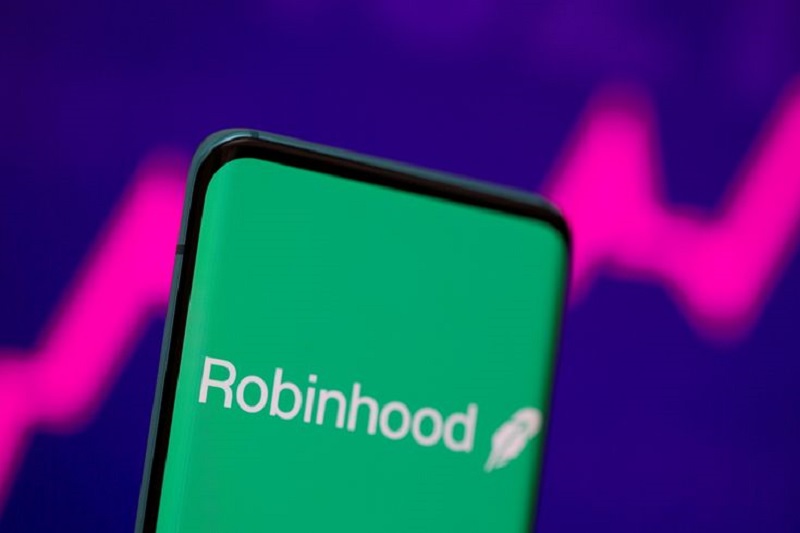By Manya Saini
(Reuters) -Robinhood Markets missed Wall Street estimates for third-quarter revenue on Tuesday, weighed by a slowdown in trading activity, sending shares of the online brokerage down more than 9% in extended trading.
Robinhood (NASDAQ:) was at the center of the 2021 retail trading frenzy, driven by mom-and-pop investors who used the company’s commission-free platform to pump money into so-called “meme stocks” during the pandemic-era lockdowns.
The boost has since faded as Americans grappling with a cost-of-living crisis, high interest rates and elevated levels of inflation put trading on the back foot.
Robinhood’s transaction-based revenue decreased 11% year-over-year to $185 million amid a 13% decline in equities and a 55% decrease in cryptocurrencies. Monthly active users dropped 16% to 10.3 million from a year earlier.
According to company executives, Robinhood often sees lower trading volumes around the holidays in November and December. The company also expects its interest revenue to decline in the current quarter on a sequential basis.
“If the current levels of securities lending and free credit balances continue, we anticipate Q4 net interest revenue will be roughly $20 million lower than Q3 levels,” said CFO Jason Warnick in a call with analysts.
Robinhood’s net interest revenue, however, nearly doubled to $251 million in the quarter as it charged customers a higher interest on their loans against the backdrop of the U.S. Federal Reserve’s rapid monetary policy tightening.
It allows eligible customers to borrow money to purchase securities and charges an interest on the debt. The feature, known as “margin investing”, has provided sanctuary to the retail investor-focused firm in recent quarters amid a deceleration in trading.
Robinhood’s net revenue rose 29% to $467 million in the three months ended Sept. 30, but missed analysts’ expectations of $478.4 million, as per LSEG data.
Its loss per share narrowed to 9 cents versus 20 cents a year earlier.
Read the full article here
